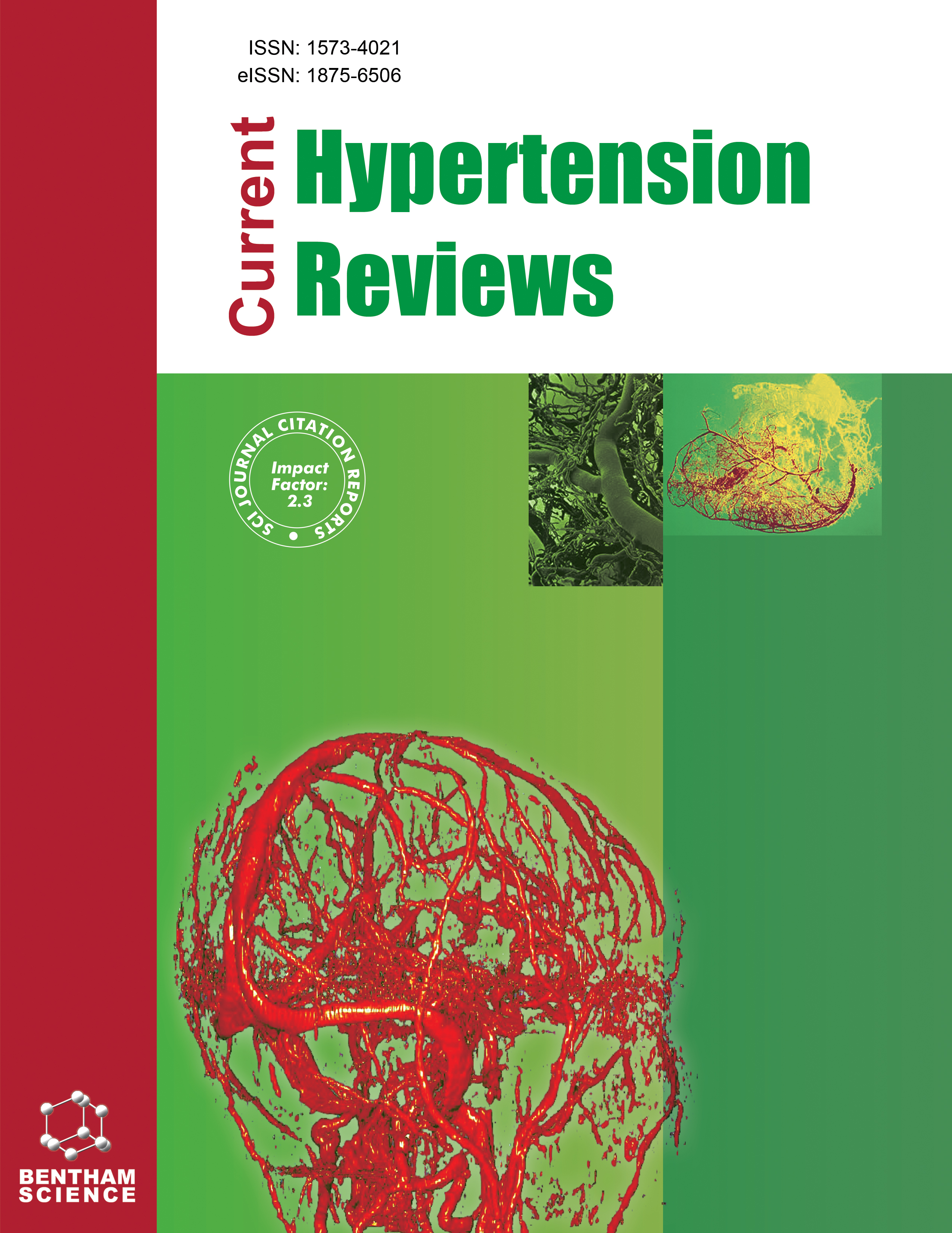- Home
- A-Z Publications
- Current Hypertension Reviews
- Previous Issues
- Volume 9, Issue 3, 2013
Current Hypertension Reviews - Volume 9, Issue 3, 2013
Volume 9, Issue 3, 2013
-
-
Types of Voltage-Gated Calcium Channels: Molecular and Electrophysiological Views
More LessVoltage-gated calcium (Ca2+) channels are ubiquitous in excitable cells, and intracellular Ca2+ transients, in which the channels play key roles, trigger many physiological events. At this time, 10 members of the voltage-gated Ca2+ channel family in mammals are recognized, and they play diverse roles in the signal transduction system. The CaV1 subfamily (L-type) is involved in contraction, secretion, integration of synaptic i Read More
-
-
-
Renal Microcirculation and Calcium Channel Subtypes
More LessAuthors: Koichiro Homma, Koichi Hayashi, Shintaro Yamaguchi, Seitaro Fujishima, Shingo Hori and Hiroshi ItohIt has recently been reported that voltage-dependent Ca channel subtypes, e.g., L-, T-, N-, and P/Q-type, are expressed in renal arterioles and renal tubules, and the inhibition of these channels exerts various effects on renal microcirculation. For example, selective blockade of L-type Ca channels with nifedipine preferentially dilates the afferent arteriole and potentially induces glomerular hypertension. On the other hand, recently Read More
-
-
-
Mechanistic View of Renal Protective Action of Calcium Channel Blockade
More LessAuthors: Naoki Sugano, Koichi Hayashi, Tatsuo Hosoya and Takashi YokooCalcium channel blockers are one of the most useful antihypertensive agents because of their definite blood pressure lowering action. Although the antihypertensive effect of calcium channel blockers is attributed predominantly to the blockade of L-type calcium channels, recent studies demonstrate that the blockade of other subtypes of calcium channels, including T-type and N-type calcium channels, offers renal protec Read More
-
-
-
Clinical Science of Calcium Channel Blocker to Inhibit Hypertensive Vascular Injury
More LessAuthors: Tsuneo Takenaka, Yoichi Ohno and Hiromichi SuzukiCalcium channel blockers are the strongest and most widely used antihypertensive drugs in Japan. Calcium channel blockers dilate both artery and arteriole that increases end-organ perfusion, thus possessing few side effects especially for the elderly hypertensive patients. The safety of calcium channel blockers was well established. In this paper, important clinical evidence supporting the effectiveness of calcium channel blocker Read More
-
-
-
T-type Ca Channel Blockers in Patients with Chronic Kidney Disease in Clinical Practice
More LessAuthors: Masanori Abe, Kazuyoshi Okada and Masayoshi SomaChronic kidney disease (CKD) progressively increases the risk of cardiovascular disease (CVD) and end-stage renal disease (ESRD) in line with its severity. Recent studies have revealed that albuminuria and proteinuria in CKD are risk factors for both ESRD and CVD. Accordingly, reductions in albuminuria and proteinuria are associated with a trend in reduced renal death and cardiovascular events. Renin-angiotensin-aldosteron Read More
-
-
-
L-/N-type Calcium Channel Blockers and Proteinuria
More LessThe first-line depressor agents for hypertensive patients with chronic kidney disease are the renin-angiotensin system inhibitors because of their antiproteinuric and reno-protective effects. However, only one renin-angiotensin system inhibitor often cannot achieve target blood pressure in patients with injured kidney. Thus, second-line antihypertensives are required. Calcium channel blockers are frequently added on the ren Read More
-
-
-
Vasospastic Angina and Ca Channel Blockers
More LessCoronary artery spasm is one of the causes of angina pectoris,acute myocardial infarction and ventricular fibrillation-related sudden death. It has been established that Ca channel blockers are protective against vasospastic angina (VSA) and treatment with Ca channel blockers provides a better prognosis of VSA. However, it is not still clarified what kinds of Ca channel blockers shows the best prognosis of VSA. We perform Read More
-
Volumes & issues
-
Volume 21 (2025)
-
Volume 20 (2024)
-
Volume 19 (2023)
-
Volume 18 (2022)
-
Volume 17 (2021)
-
Volume 16 (2020)
-
Volume 15 (2019)
-
Volume 14 (2018)
-
Volume 13 (2017)
-
Volume 12 (2016)
-
Volume 11 (2015)
-
Volume 10 (2014)
-
Volume 9 (2013)
-
Volume 8 (2012)
-
Volume 7 (2011)
-
Volume 6 (2010)
-
Volume 5 (2009)
-
Volume 4 (2008)
-
Volume 3 (2007)
-
Volume 2 (2006)
-
Volume 1 (2005)
Most Read This Month
Article
content/journals/chyr
Journal
10
5
false
en


